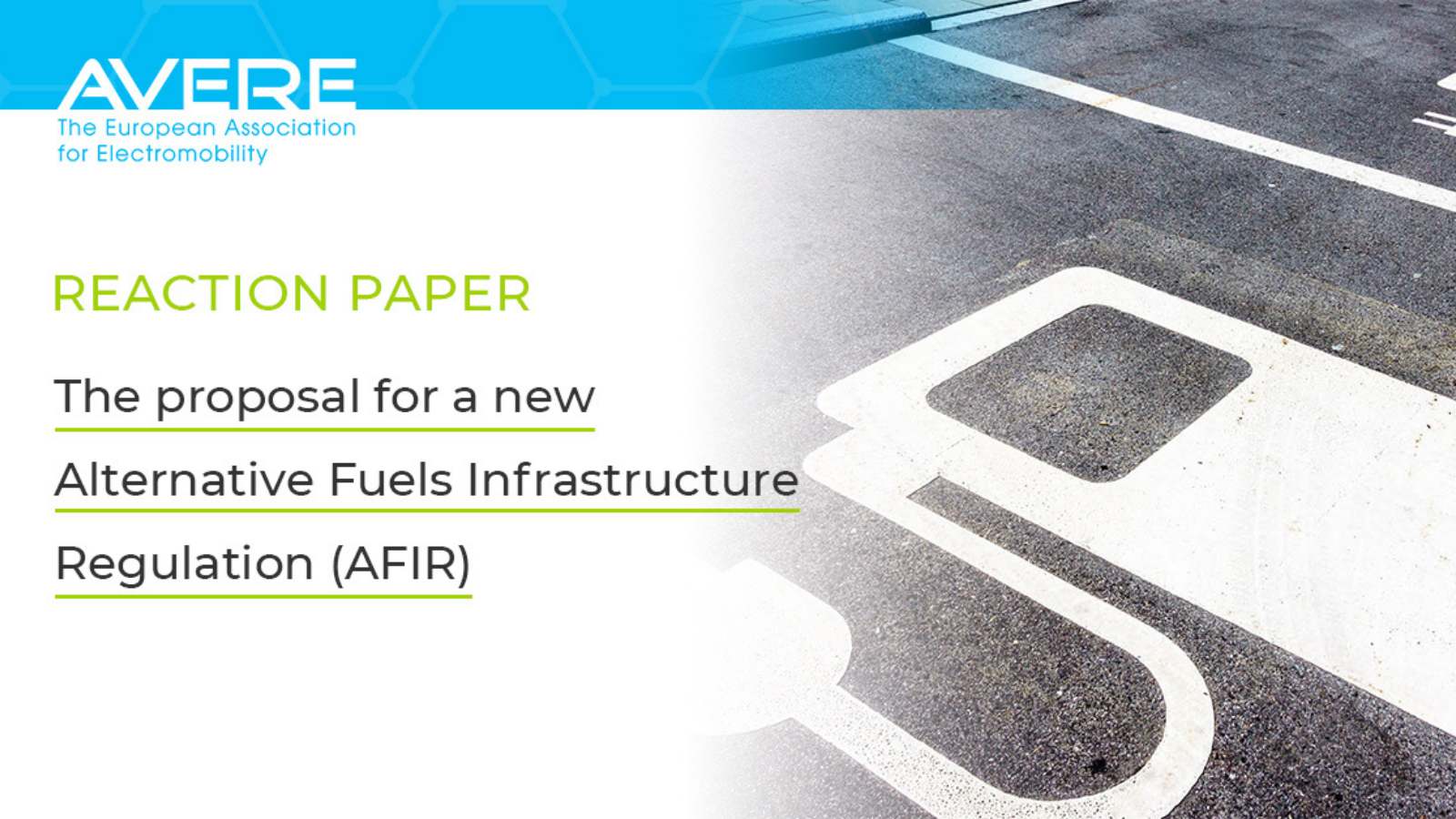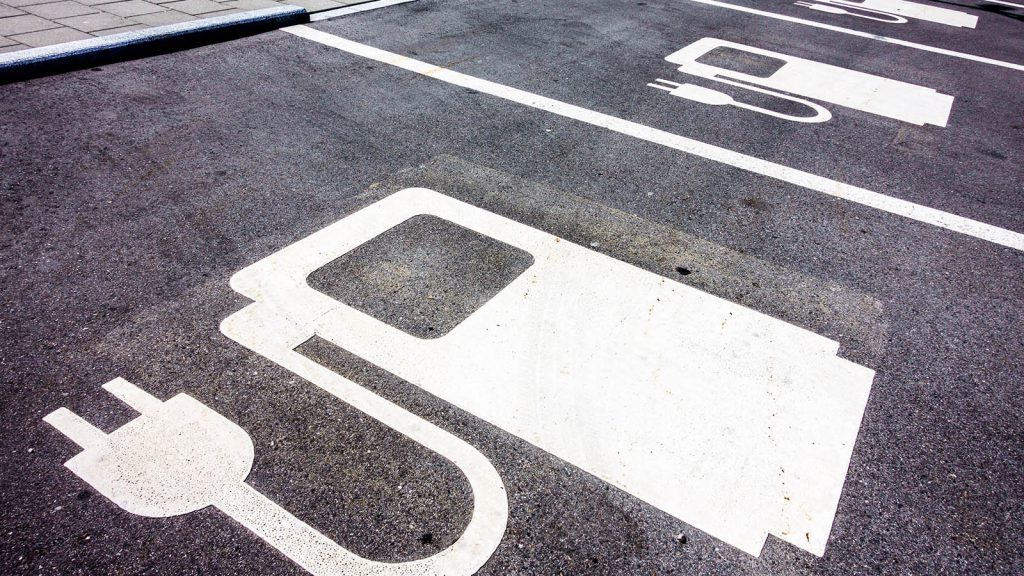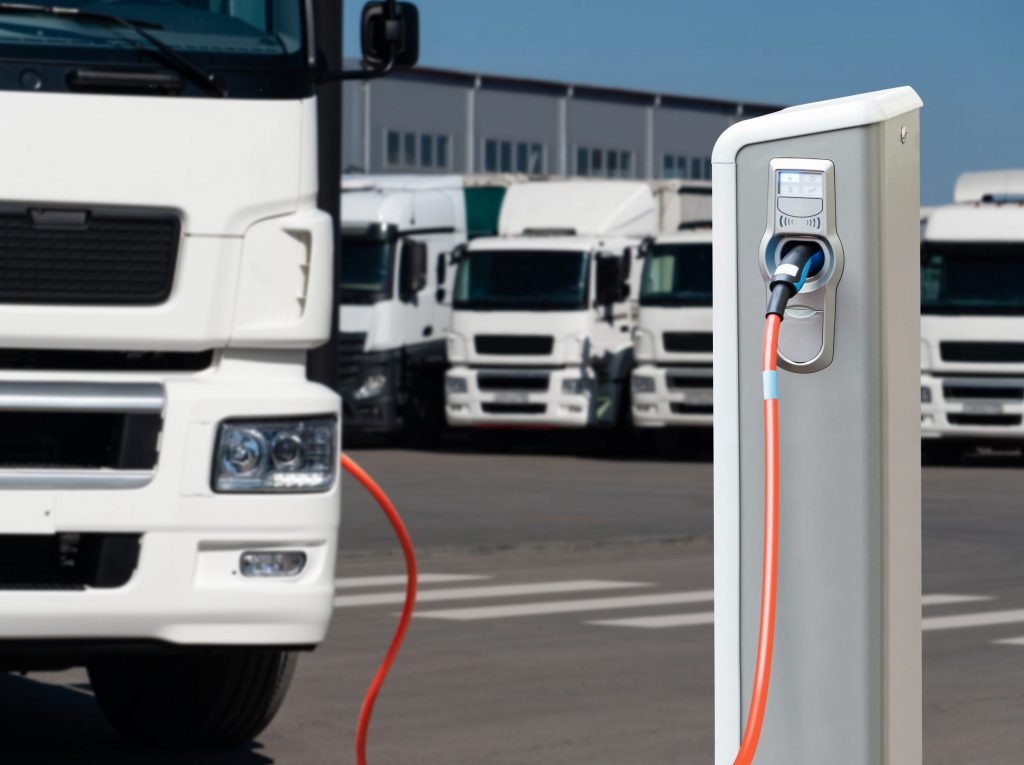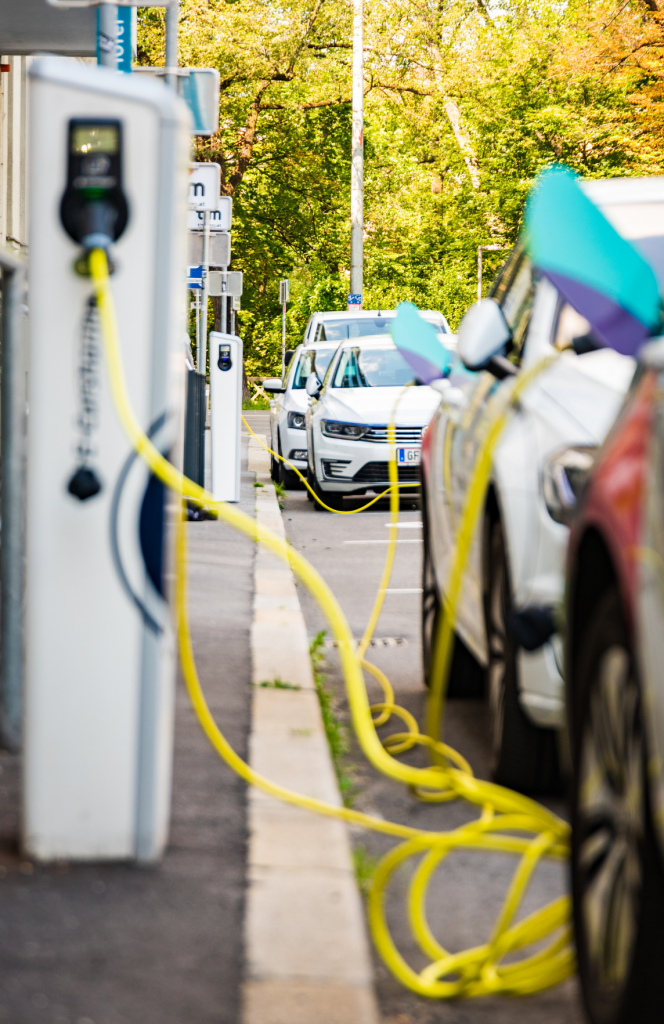
15.12.2021

AVERE strongly welcomes the Commission’s proposal to revise the Alternative Fuels Infrastructure Directive (AFID) and to transform it into a regulation setting binding targets for charging infrastructure rollout at member state level.
The conversion to a regulation will ensure swift and direct implementation, supporting a coherent and interoperable network for private and professional users in line with the electric vehicle market’s growth. Fleet-based targets will ensure infrastructure growth goes hand in hand with EV uptake, resolving the “chicken-and-egg” problem, whereas distance-based targets along the TEN-T network will put an end to range anxiety for drivers across the continent. In addition, the market-based approach the Commission has chosen will foster fair competition between charging providers and solutions, which will support innovation and help enhance consumer experience in years to come.
However, some of the proposed targets seem to have been set rather conservatively – notably on heavy duty vehicles and for member states in earlier stages of the EV market’s development. Furthermore, certain technical requirements proposed will need careful balancing as to their impact on the business case of charging throughout the EU, and in order to maintain a technology-open approach that supports innovation. Retroactive requirements are particularly worrisome in this context, as these may seriously harm the business case for existing infrastructure and could even lead to the closure of some existing charging stations.
This position paper thus sets out AVERE’s views and recommendations on the Commission’s proposal for a revised AFIR.
Carefully balance scope and clarify key definition
The revised AFIR is significantly wider in scope than its predecessor AFID. While the wide proposed definition of “publicly accessible” charging infrastructure ensures a comprehensive coverage of the regulatory provisions proposed and may therefore support a more harmonised charging market, it comes with worrying implications regarding existing infrastructure, which thus far was not covered under AFID. Such infrastructure may now be subject to various retrofitting and new retroactive legal requirements, the cost of which will be prohibitive to their further operation in many cases. The proposed definition is also not clear on cases in which access to charging stations is restricted to a “semi-fixed” group of users – for example hotel guests or fitness studio members.
We therefore recommend to:
• Clarify the proposed definition of “publicly accessible” infrastructure
• Exempt existing infrastructure from retroactive impacts, which may harm their business case and EV consumer experience, unless explicitly otherwise specified
• Provide adequate transition periods where retrofitting requirements are explicitly introduced by legislators.
Set appropriate nationally binding targets, especially for early market stages

AVERE strongly supports the setting of nationally binding targets under the revised AFIR. The structure of the proposed targets addresses two major recurring issues in the public debate around charging infrastructure: while the new fleet based targets effectively solve the “chicken and egg”-problem by tying infrastructure rollout to EV uptake, the distance based targets along the TEN-T network will put an end to “range anxiety” by ensuring a minimum coverage along key highways. Additionally, the proposed dedicated HDV targets will support the rapid decarbonisation of heavy-duty vehicles as electric trucks are currently starting to reach the market.
However, AVERE regrets that in drafting the provisions for capacity-based targets for light duty-vehicles, no provisions have been introduced to ensure minimum coverage in markets in their infancy, before the initial uptake of EVs. Many markets, especially in Eastern and South-eastern Europe, will barely have to deploy infrastructure in coming years due to a low number of EVs on the roads, which may undermine users’ confidence in being able to charge their vehicle and thus deter them from buying an EV. To effectively remedy the “chicken-and-egg”-problem also in earlier market stages, infrastructure should have to be deployed for at least 10% of the vehicle fleet in each member state, with the proposed capacity targets coming into effect in markets with higher market shares.

While the proposed coverage of the distance-based targets seems appropriate, the late application of targets along the TEN-T comprehensive network will leave thousands of kilometres of European motorways, particularly those serving rural areas,
uncovered until 2030. To enable Europeans even in rural and remote regions to charge on their long-distance trips already in the coming decade, AVERE calls for bringing the application of targets for the TEN-T comprehensive network forward by five years, thus aligning them with those for the TEN-T core network.
To fully decarbonise EU road transport by 2050, electrification of the EU fleet will have to go beyond passenger cars. Against this
background, the requirements for heavy duty vehicles, while welcome in principle, seem to have been set inadequately low to support the expected accelerating uptake of electric trucks in coming years. Electric heavy-duty vehicles are market-ready, and
a growing range of models is becoming available. The ambition of the targets for both TEN-T Network and Urban Nodes should thus be revised significantly upwards, anticipating an ambitious proposal for heavy duty CO2 standards in 2021.
We therefore recommend to:
• On Light Duty targets,
• Require a minimum charging capacity commensurate to 10% of the total vehicle fleet, even in member states where the uptake of EVs has not yet taken place to support early adopters
• Maintain the proposed distance-based targets, but bring application along the comprehensive TEN-T network forward by 5 years, in line with the core network requirements
• On Heavy Duty targets,
• Increase the requirements for heavy duty charging to 2000 kW (Core Network 2025, Comprehensive Network 2030) and 5000 kW (Core Network 2030, Comprehensive Network 2035) respectively
• Double the ambition for urban nodes
Facilitate ad-hoc payment through
an open and balanced approach
AVERE supports the Commission’s efforts to enhance user experience by introducing harmonised requirements for interoperability and to facilitate ad-hoc payment. Users should always be able to pay ad-hoc across the union.
We acknowledge the fact that the Commission has chosen to impose an obligation to install card readers or contactless readers at fast charging stations. While it is important to facilitate ad-hoc payment through widely utilised payment methods, especially along the TEN-T network, blanket retrofitting obligations for all existing recharging stations, due to the high cost incurred on operators, should be avoided. Scope should also be left to accommodate future advances in payment technologies in the Union in future reviews.
We therefore recommend to:
• Limit payment technology retrofitting requirements to fast recharging stations along the TEN-T network only and delay their entry into force to 2030, subject to a 2026 review, in order to strike a balance between burden on CPOs and facilitating long-distance travel for users
• Provide a one-year transition period for industry to prepare the implementation of payment provisions for new stations
• Leave scope to accommodate advances in payment technologies in future reviews
Support price transparency and comparability
AVERE strongly believes that consumers should always be fully aware of the price of charging their vehicle, and that such transparency is key to enabling competition and ultimately lowering consumer prices. We thus welcome the Commission’s strong focus on enhancing price transparency.
However, the proposed obligation to display prices at the recharging station itself in physical form would impose disproportionate cost on operators, having to install and even retrofi physical displays on all their recharging stations, irrespective of power output or location. Added value for consumers would be marginal, as such information could, in many cases, be made easily accessible to them via digital means. Stickers pose no viable alternative to retrofit existing stations, as this would preclude any form of dynamic pricing.
Furthermore, the price transparency obligations proposed for Mobility Service Providers (EMSPs) seem disproportionate, obliging them to disclose all supply side price components. This will not only undermine a functioning market for charging services, but may also harm users: the price breakdowns provided to them may become overly detailed and complicated, and, due to differing pricing components disclosed between CPOs and EMSPs, less easily comparable. AVERE therefore supports a common format for all price indications, breaking costs down into price per session, minute, and kWh.
We therefore recommend to:
• Replace the obligation to “clearly display” prices at each charging station with an obligation to make this information “easily accessible”
• Align the obligations on price transparency for EMSPs with those imposed on CPOs to enhance comparability of prices for users and protect sensitive pricing information
Enable open competition while fighting price discrimination
AVERE advocates for an open, transparent and accessible charging infrastructure network, preferably governed by common open standards, where there are opportunities for all market parties – large and small – to compete under the same conditions.
We therefore support the intention of article 5(4) to fight price discrimination against particular consumers or consumer groups, and to avoid consumer lock-in. However, it will also be crucial to allow for a degree of price differentiation to enable competition on pricing. This will be in the interest of consumers, who may be able to profit from lower rates as a result of market competition. Against this background, the vague specifications of when and to which extent price differentiation will be permitted are problematic, as they may create a high degree of uncertainty for businesses and consumers. It should thus be better specified what constitutes “proportionate” price differentiation, and an “objective” justification. The relevant provisions should also clearly differentiate provisions between B2B and B2C dimensions.
The new data sharing requirements under Article 18 may further increase competition, transparency and user information, whilst enabling new data-based and digital business models as well as roaming. AVERE supports making the data currently specified under article 18(2) accessible at no cost via National Access Points (NAPs). However, the scope for the Commission under article 18(4) to add additional data dimensions in the future may come with higher cost for charging providers, at which point a proportionate and non discriminatory compensation may have to be considered, if appropriate. Furthermore, to guarantee the desired open ecosystem, data provided free of charge to national access points should also have to be provided free of charge to end users.
We, therefore, recommend to:
• Clearly define the conditions under which price differentiation will be permitted, notably by clarifying the terms “proportionate” and “objective” in article 5(4) and differentiating between B2B and B2C dimensions
• Create scope to, if appropriate, compensate the provision of additional data types specified in future delegated acts in a proportionate manner, while remaining consistent with maintaining an open charging data ecosystem throughout the EU
• Ensure data provided at no cost to national access points is made available at no cost to end-users
Facilitate plug and charge
Plug and charge has the potential to become the most common and convenient option for the majority of European EV users when charging their vehicle. While users should have the right to opt out of making use of the technology at any given occasion if they find the terms unfavourable, it should be ensured that new requirements do not complicate the process for users who do want to make use of automatic authentication – i.e., no inputs at the charging station or vehicle should ever be required beyond plugging in the vehicle. Furthermore, in order to both reduce operators’ cost and streamline consumer experience, the obligation to physically display an opt-out option at every recharging station should be replaced with an obligation to make this option transparently available, for example via digital means.
We therefore recommend to:
• Clarify the provisions on plug and charge under article 5(3) to ensure users can conveniently make use of automatic authentication
• Replace the obligation to “clearly display” the option to opt out with an obligation to make such information available via easily accessible, including digital, means.
Make smart charging the norm for new chargers
Smart charging can be key to balancing and minimising the additional load of EVs on the electricity grid, reducing the overall cost of the transition and maximising the contribution of renewables to powering the transport sector. Against this background, AVERE supports making all new normal-power chargers capable of V1G smart charging, as well as the proposed review every 3 years to evaluate the potential for improvements under article 14, notably in regard to V2X/bi-directional charging technologies.
However, the currently proposed wording implies a retrofitting requirement for existing non-smart chargers. Such a requirement would not only come at prohibitively high cost for operators, necessitating the closure of existing recharging points in many cases. Given the expected small share of legacy chargers in years to come, it also adds comparatively little value in terms of grid stability and system flexibility. In addition, the currently proposed retrofitting requirement, having no implementation period assigned to it, would create major legal uncertainty by rendering non-smart existing chargers “non-compliant overnight” once the regulation enters into force.
Lastly, when revising or amending provisions on smart charging in AFIR, it will be key to keep definitions aligned between AFIR and the proposed revision of the Renewable Energy Directive in order to avoid any legal uncertainty over what constitutes smart charging.
We therefore recommend to:
• Make all new normal-power chargers V1G smart charging capable and maintain regular evaluation of V2G deployment opportunities
• Avoid any retrofitting requirement for existing chargers regarding smart charging
• Pay close attention on keeping the definitions of smart and bidirectional charging aligned with RED II
Ensure harmonised governance and enforcement
AVERE supports the strong proposed progress monitoring provisions and the governance structure via national policy frameworks, which will allow for nationally tailored rollout plans and strategies rather than a “one-size-fits-all” approach. It is particularly crucial that planning, permitting and procuring have been included as dimensions to be covered by the national frameworks, as these often present the most substantial bottleneck to a quick rollout of charging infrastructure today.
However, national plans should go beyond the infrastructure covered under the AFIR by also taking private charging infrastructure into account. A stronger link to the upcoming revision of the Energy Performance of Buildings Directive may be required to enable a holistic and balanced planning approach.
Furthermore, while AVERE is fully in favour of making charging accessible and inclusive, requirements for persons with disabilities and reduced mobility should not be tackled through national plans, as diverging technical requirements in this regard may lead to market fragmentation. AVERE would prefer measures to enable access for people with disabilities to be specified at the European level.
We therefore recommend to:
• Facilitate a strong integration of national policy frameworks under AFIR and similar provisions in the upcoming EPBD
• Address requirements for drivers with disabilities at the European level
Support secure and high-quality infrastructure
Besides creating a dense recharging network providing sufficient levels of power to consumers, EU legislation should ensure the deployed infrastructure is of high quality, as well as safe and secure. Notably, the threshold for reporting non-operational charging infrastructure (i.e., charging points non-operational for more than 50% of days in a given year) seems to have been set unreasonably high, and focussed on the wrong metric in individual recharging stations. A focus should rather be put on ensuring that any recharging pool can provide power to drivers at any given time, i.e., that at least one recharging station is functional within any given recharging pool at least 95% of the time.
However, the revised AFIR could go further than just imposing basic downtime reporting requirements. While AVERE considers competition between charging operators, rather than regulation, the main driver of quality improvements for consumers, binding minimum requirements in terms of reliability, safety and accessibility should be established for all recharging stations deployed with the support of public funding, ensuring public spending effectively supports EV drivers across Europe. To further support competition on quality, the introduction of a voluntary European label/certification for the most reliable and high quality networks could also be envisioned. Lastly, given the new requirements for digitally connected infrastructure, an explicit reference should be included to reflect the need to safeguard the cybersecurity of recharging stations in the EU.
We therefore recommend to:
• Replace the reporting threshold for non-operational recharging stations (50% non operational days in a year) with a stricter 5% threshold at recharging pool level
• Include binding quality standards for recharging stations supported by public funding
• Consider introducing a European certification for high-quality charging networks
• Include an explicit reference in regard to cybersecurity of recharging stations
Focus exclusively on zero-emissions technology
Unfortunately, the currently proposed draft still includes provisions that may perpetuate the role of fossil fuels in the road transport sector. These provisions should be revised to make the AFIR truly fit for carbon-neutral EU road transport by 2050. Most crucially, LNG refuelling stations should be entirely excluded from the scope of the proposal for road transport. LNG offers negligible CO2 savings and may perpetuate Europe’s dependence on fossil fuels in transport.
On hydrogen, the Commission’s ambition seems disproportionately high, proposing to spend about 12 times more on hydrogen refuelling infrastructure compared to heavy-duty electric recharging stations. This is particularly unsettling given the insufficiency of the currently proposed recharging targets for heavy-duty vehicles, and poses the danger of significant stranded assets, given many heavy-duty manufacturers are moving towards electrification over fuel cell technologies. In line with the energy efficiency first principle, hydrogen should only play a role where direct electrification is not possible. Furthermore, in order not to perpetuate the EU’s dependency on fossil fuels, only “green” hydrogen produced from renewables should be eligible for use in the transport sector.

